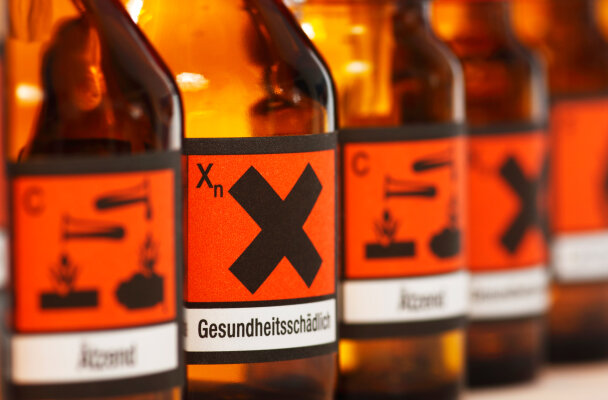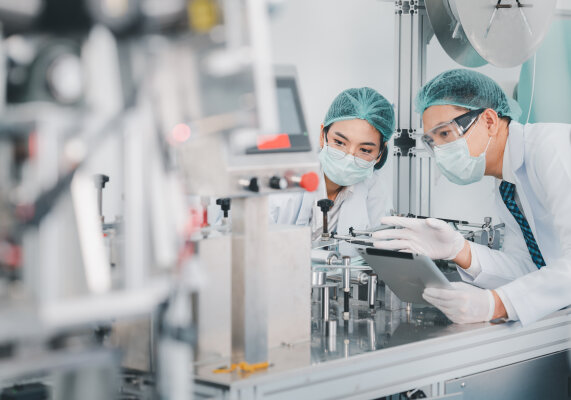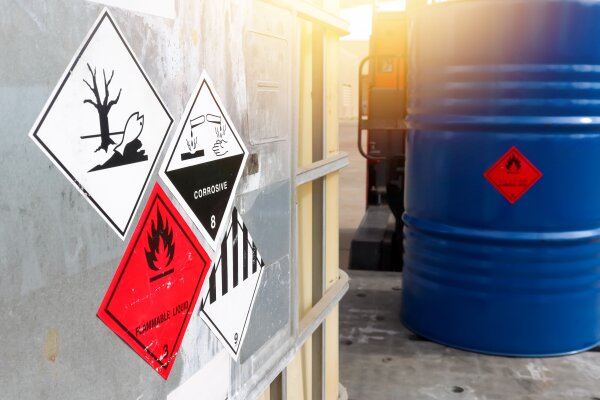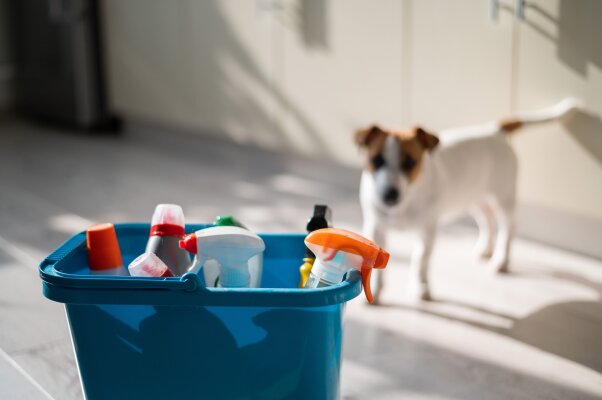Calibrate refractometer: everything you need to know
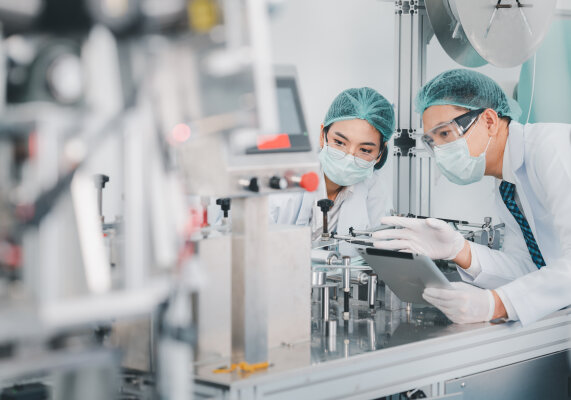
A refractometer is used to determine the refractive index of transparent materials. Depending on the type of sample, different versions of these instruments come into question and must be specially calibrated. In this blog post, you can read about the differences between the models, how refractometers are calibrated, and what to look out for in terms of calibration liquid and interval.
Calibrate different refractometers
Refractometers are used to determine the refractive index or refractive index of liquid or solid transparent substances so that certain properties (such as the concentration of dissolved substances or refractive ratios) can be derived. In order for the device to meet the particular requirements, there are many different types and designs.
Hand refractometer
For most mobile field and laboratory applications, a handheld refractometer is used, which can be adapted – depending on the specific field of application. Therefore, most honey refractometers, vintner refractometers, alcohol refractometers and refractometers for aquaristics and the determination of a salt content also fall into this category. Daylight is used as the light source, which distinguishes the devices from other types.
Honey refractometer
The biggest competitor is the Abbe refractometer, which is set up stationary and equipped with a built-in light source. The light refraction that can be determined with this type of instrument depends on the wavelength of the irradiated light. Typically, Abbe refractometers are somewhat more expensive to purchase.
Process refractometer
The third category – process refractometers – is even more professional and specialized. They are mainly found in industrial use and are highly adapted to the field of application. For example, many refractometers are built directly into machines, heat pumps, and equipment, so they fit into an automated process. This also has an influence on the calibration of the refractometers.
Calibrate refractometer: Instruction
Speaking of calibration – in order for the refractometer to produce the most accurate readings possible and ensure reproducible results, it must be reset regularly. Although this calibration may differ from device to device, it is usually quite simple and follows the following basic procedure:
- temperature can be reached: For the refractometer calibration to be as accurate as possible, it should be performed at 20°C. It is best to store the device at this temperature for 24 hours before adjustment.
- Select reference value: The further procedure depends on the desired reference value. For example, if it is a honey refractometer, clove oil (with a refractive index of 19.6%) or olive oil (27%) must be used. For a wine refractometer, on the other hand, distilled water with a reference value of 0% must be selected.
- Prepare the refractometer: Apply two to three drops of calibration liquid to the prism of the instrument. Avoid air bubbles and dry spots.
- Check the limit line: A limit line is displayed on the refractometer, which must match the specified value. If it does not, readjustment is necessary.
- Readjust the refractometer: Turn the adjustment screw of the refractometer until the waterline indicates the desired reference value. The device is already optimally calibrated.
Calibrate refractometer: digital and manual
Refractometers are distinguished not only in types of construction, but also in modes of operation. Thus, individual models can be divided into digital and manual refractometers, the calibration of which may differ slightly. However, the differences between the two device types are often minimal.
Digital refractometer
Digital refractometers have a modern LED display with digital readout, which makes presetting, calibrating and reading the instruments quite easy. When adjusting refractometers, there is usually no adjustment screw, but an adjustable number shown on the display.
Manual refractometer
Classic refractometers, on the other hand, are manually operated and have a viewing window and a waterline. When calibrating the instruments, an adjustment screw is used, which allows the reference value to be adjusted to the waterline.
Calibrate PH meter: the right calibration liquid
Not every refractometer application is the same, which is why different reference values are necessary – this has an influence on the selection of the calibration liquid. It is important that the temperature of the liquid and the device must be at 20°C and that the calibration liquid is applied first before the adjustment screw can be adjusted. For most applications, the compatible fluids are specified:
- Clove oil: This oil is used especially for honey refractometers, because the reference value of the liquid has a refractive index of 19.6%. Thus, it corresponds exactly to the water content of honey according to the German DIN standard 10752.
- Olive oil: Olive oil can also be used as a reference solution, provided that the calibration value is between 27 % and 27.2 %.
- Sunflower oil: Incidentally, sunflower oil is also used as a calibration liquid. This is necessary for samples whose measured value is between 24.8% and 25.2%.
- Distilled water: Distilled water provides a base value of 0 % as a reference solution. It is used especially in wine refractometers and many measurements in engineering and food industry.
Is it important to calibrate the refractometer?
By calibrating the refractometer, it is possible to ensure that the basis of the measured value remains as accurate as possible – this prevents deviations in the measured values. This in turn ensures that you can fully rely on the device. The results also become reproducible, which is essential in quality control, for example.
Another advantage of calibration is the maintenance and care it gives the refractometer. This can extend the life of the device and improve durability.
How often do you have to adjust the refractometer?
Calibration of the refractometer is one of the significant steps in the maintenance and care of these instruments. If you do not carry out regular adjustment, you risk deviating more and more from the reference value – this results in inaccurate and unreliable measured values. In addition, the refractometer must always be adjusted when switching between different substances (such as honey, beer or wine) so that the base value matches the guide value.
It is usually necessary to calibrate the refractometer for the first time before using it for the first time. After that, it is sufficient to adapt the adjustment to the intervals of use, so that readjustment should be performed every 1 to 12 weeks.
Calibrate refractometer correctly and regularly
To ensure that the refractometer lasts a long time and delivers accurate measurement results, it must be calibrated at regular intervals – this can be done very easily in just a few steps. When calibrating the refractometer, remember to use a suitable reference liquid and ensure that the temperature is optimal.
FAQ
Calibration” is a manual readjustment that ensures accurate readings from the refractometer. In this process, the basic value of the device is brought to size so that deviations can be effectively prevented.
Ensure that the instrument temperature is about 20°C and select a calibration liquid with a suitable reference value before placing a few drops on the prism of the instrument. Adjust the adjustment screw so that the waterline corresponds to the reference value.
After the refractometer has been calibrated before the first use, the interval depends primarily on the use. Frequently used instruments should be recalibrated approximately every 1 to 4 weeks. Less used models can have up to 12 weeks in between.
Measuring instruments (such as the refractometer or the pH meter) can be easily calibrated by yourself. For this purpose, it is important to have a suitable calibration liquid or a suitable buffer solution at hand. Specialized knowledge may sometimes be required for highly specialized equipment.
Do you have questions about the topic or would you like to suggest a topic? Feel free to contact us by phone at +49 30 2096579 00 or send us an email at info@medsolut.com.

